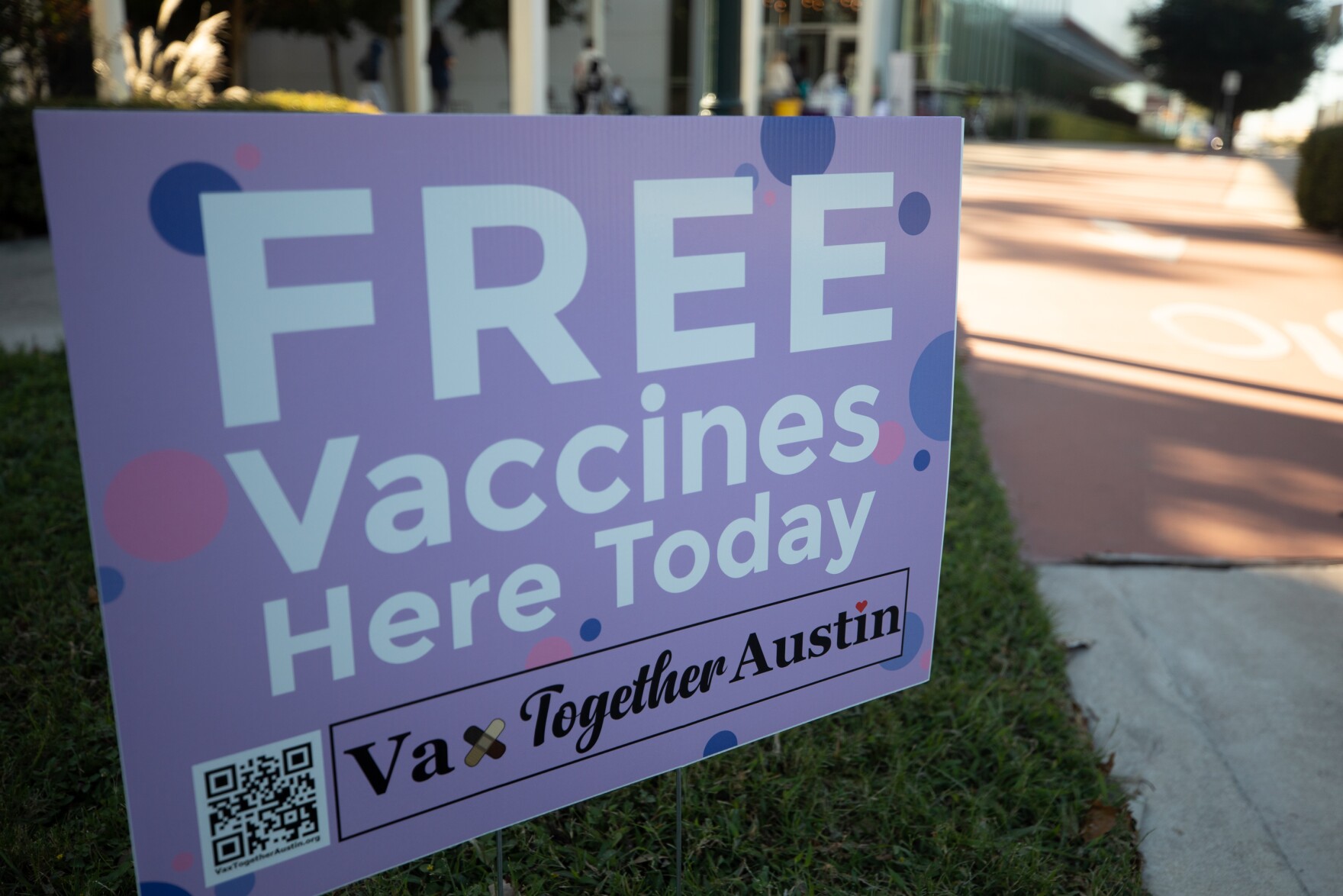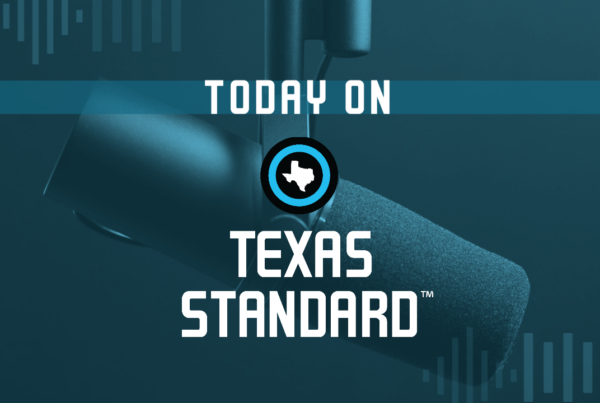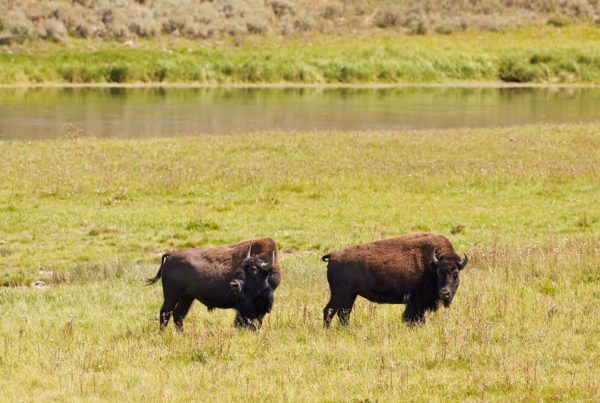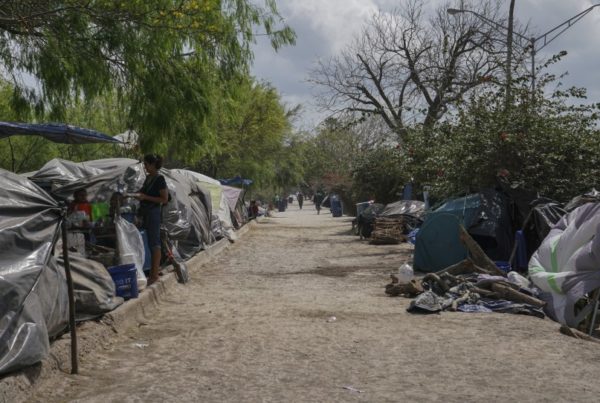COVID-19 hospitalizations, average new cases and new deaths are all on the rise in Texas compared with the seven-day average a week ago. That’s especially true in El Paso, where hospitalization rates have surpassed the important 15% threshold that triggered partial shutdowns and mask requirements during previous surges. And while delta is the main variant spreading in the state, health officials are also keeping an eye on the omicron variant that has now been found in at least one Texas patient.
Dr. Ogechika Alozie is an El Paso physician and a member of the Texas Medical Board’s COVID-19 Task Force. El Paso is one of two regions seeing increased hospitalization rates. Listen to the interview above with Dr. Alozie, or read the transcript below, to learn more about how to protect yourself from the delta variant, which is still a greater concern among health officials because it’s so widespread.
Texas Standard: Roughly 72% of residents in your area have had their COVID-19 shots. Could you explain why El Paso’s now seeing this increase in cases?
Dr. Ogechika Alozie: I think the first thing that needs to be said is, we’re not sure. And anybody that tells you that they absolutely know is not telling the truth. One of the things that we have noticed throughout this pandemic, however, is that El Paso has been different in [the] timing of its surges compared to the rest of the state. We were different in November, December compared with the rest of the state; we were different in the summer. And so this could just be a natural progression.
When the rest of the South, the core South, was having their delta surge, El Paso wasn’t. This just may be our time, like the Midwest and the Northwest and the Northeast are having it, in terms of looking at vaccination status.
I mean, we’re really proud of the work we’ve done, getting the 72% fully vaccinated. A little bit more have had at least one shot; that’s great. I think it’s important to understand that, if you ask me, we have about a population of a million people – that’s still almost 200,000 people that are not vaccinated and are at risk. If any surge happens to those 200,000 people, this is exactly what you’re seeing, and I really do believe this is what we’ll continue to see as the years go on.
It’s my understanding you have yet to confirm a case of the omicron variant in El Paso. But are you concerned about what’s to come?
You’re correct; we have not had a confirmed case. Am I concerned about omicron? Not today, specifically because 99-plus percent of all the cases, not only in El Paso, but in America, are delta. And so there’s still a lot of information that we need to figure out about omicron. I mean, obviously, the media and people are worried, they’re scared. It’s driven a lot of fear and anxiety. But I tell people, hold on a second; if you’re worried about your health care today, we have to discuss delta and we have to figure out how to get you vaccinated fully and protected, and that may require boosters.
As this story about the omicron variant picks up steam, though, do you think it will motivate more people to get the booster shot?
Absolutely. And not only is it my sense, but the data lines up with that, the CDC (Centers for Disease Control and Prevention) released some data last week that we had the highest jump in vaccinations over a two-day period that we’ve ever had in the United States, and that happened last week as omicron variant started to scare people.
So is scare a tactic, occasionally? Yes. Is scaring people the way that we need to get through this pandemic as it becomes endemic? Probably, no, we’re going to have to continue to pitch to people: protect yourself. Maybe not everybody needs protection. Pfizer’s data this morning says that three shots actually protects against omicron. That’s exciting and excellent news again, yet to be determined, in there. So, a lot of information we’re going to need to get.
Some reporting has indicated that the omicron variant’s spread is more intense, but its actual effects, symptoms, are not as bad as delta. Is that the latest that you’re hearing?
I think it’s hard to tell. You’ve got to remember that the majority of the data we have out of South Africa is in younger people, in a population that has not necessarily been as hit as hard by delta as the United States. A lot of people were unvaccinated but probably protected by youth, and their symptoms were milder. That may be because they’ve already had exposure; it may be because they’re younger. We really need to understand, how does it affect people that are fully unvaccinated and vaccinated, and those who are older?
We continue to be really clear about something: the biggest risk factor to poor outcomes in COVID is age. And so we’ve got to figure out what does that look like? Some of these neutralizing studies are showing some things that are potentially hopeful. The mild cases are hopeful, but we’re not going to know for a while.
I think my pitch to people continues to be, if you’re at risk, get fully vaccinated. Fully vaccinated is no longer one Johnson & Johnson; I think that’s a really big point that we have to push to people. There’s a lot of people that got J&J because of its ease. I was one of those people in December of 2021. One Johnson & Johnson shot is not fully vaccinated, but they need to get another shot. And I think that has to be important to tell people.














